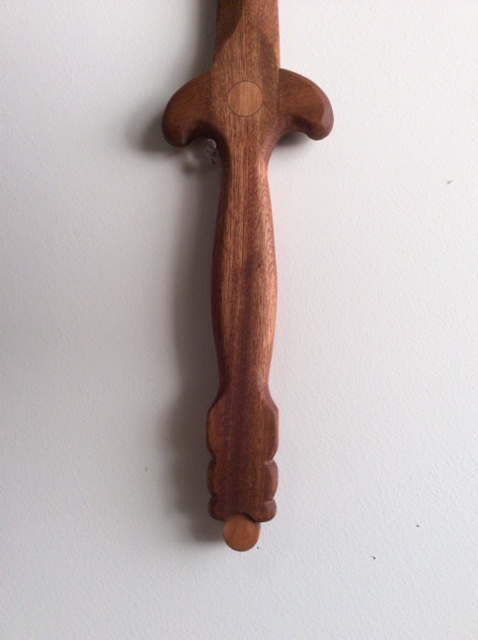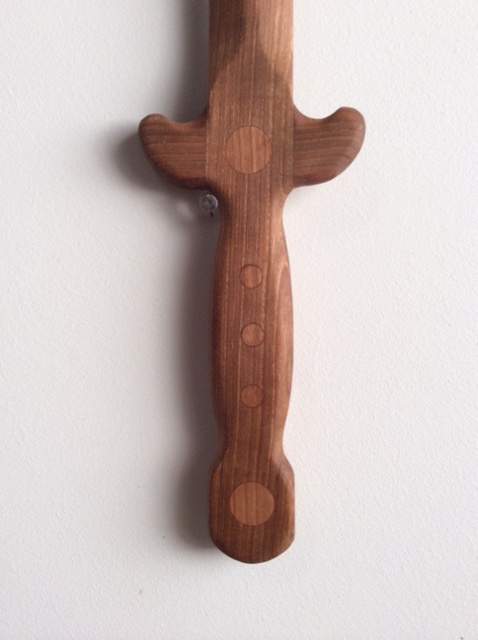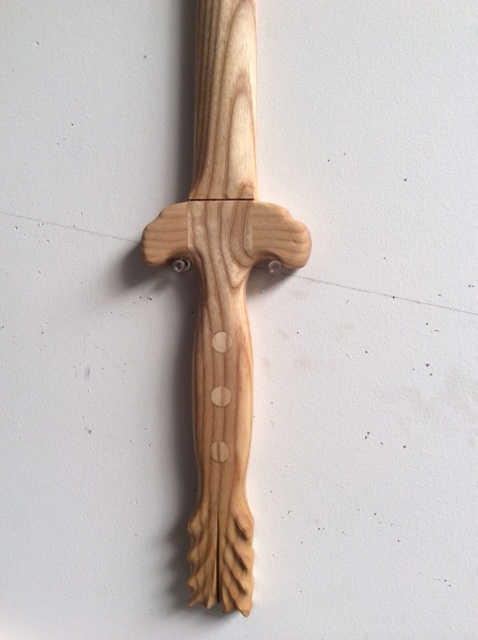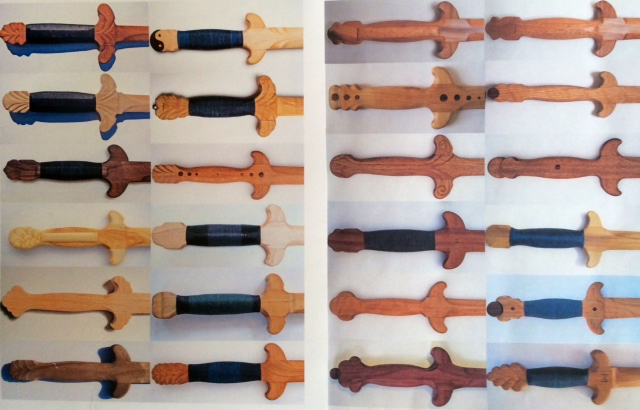


Swords
Click on the links below to go to the vendor or product pages.
High quality wood practice swords can be purchased from Little Raven Studios One of the questions the site asks is whether you want a pointed or rounded end on the sword. The rounded end is intended to make fencing safer. Professor had his practice swords made with rounded ends. I prefer the pointed for both fencing and form.
I recommend either the Ming Jian

or the Ching Jian

To find the blade length you need for ether of these swords measure the distance from your navel to the floor in bare feet. Subtract 10" from that number. Choose a blade length within an inch of that number. If there's some question about the measurement, I'd go with the nearest longer available length on the assumption that the blade can be trimmed shorter. Please, keep in mind that this is an approximate method. The sword maker at Little Raven is easy to talk to. Tell her that you want a sword that's long enough that the pommel covers your navel.
In addition to blade length, you have some choice about the kind of wood that's used. As long as the blade is hickory, or like hickory, resists denting, choose whatever looks good to you.
Last, but of considerable importance, is the point of balance. The 4 to 5 inch typical value is OK. I'd ask that the center of balance be placed in the 3.5 to 4 inch range. The sword will feel less nose heavy.
Wood swords of high quality and very different personality than the Little Raven swords can had from Rebecca Wolf.
I think the photos below give no more than a hint at the beauty of these swords.
I've only held one but it was lithe and lively and had nearly perfect center of balance and center of percussion. These are not swords for banging away at each other, but then Professor did call the noise that makes "the sound of ignorance."

 |
 |
 |

The following information is from Rebecca.
I have made swords in many kinds of wood, Cherry is nice, Oak, Ash, Mahogany, Maple, one in Purple Heart (very hard to work). These swords are light, as favored by some teachers.
The length is measured from the belly button to the floor, usually. I have also heard that the blade should be from the palm to the bottom of the ear, and then the grip can be a hand, hand and a half, or two. The width of the grip can vary as well, they can also be wrapped. So I mostly go with the first simple measurement, but if people have things they want I try to work that into the design.
I started making swords after taking a class from Ken Van Sickle. He showed me a sword he had made, I asked how he did it, and if he thought I could make one. He gave me a piece of wood to try with. He like the result, and Maggie was interested in a few for her class at the Co op. So there's been a bit of learning as I go, but I think the basic design is sound.
The price is $100, but if I do carving on the hilt or much inlay or the type of wood can add a little extra to the price.